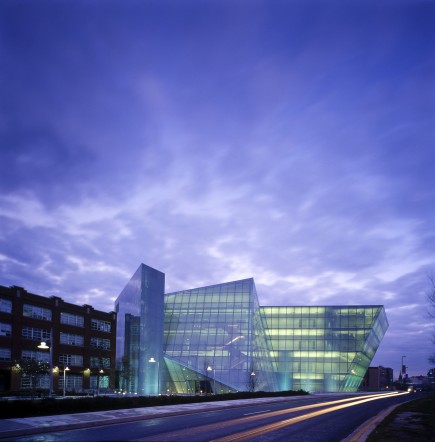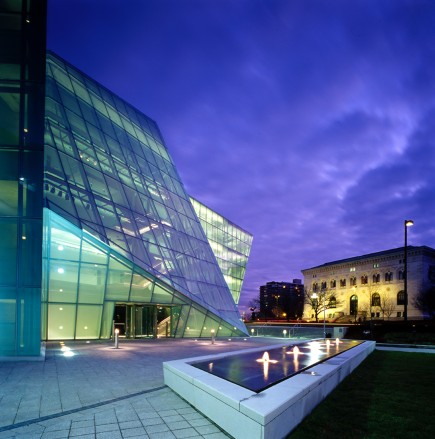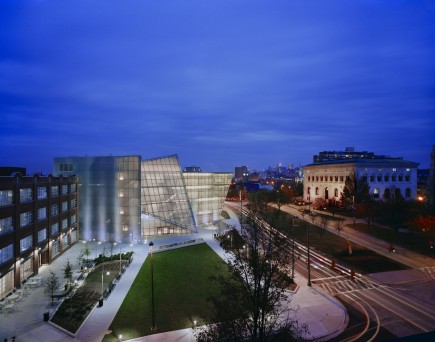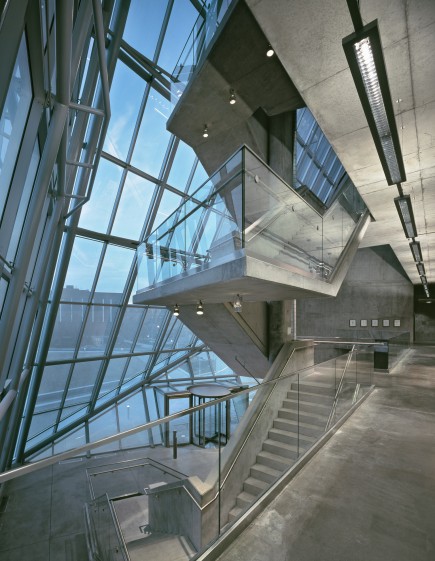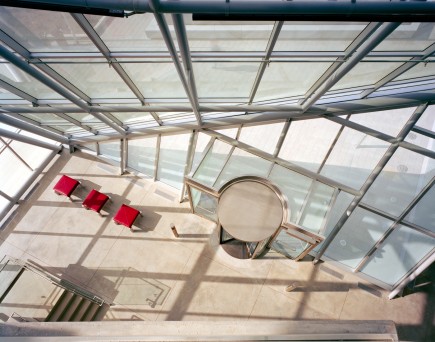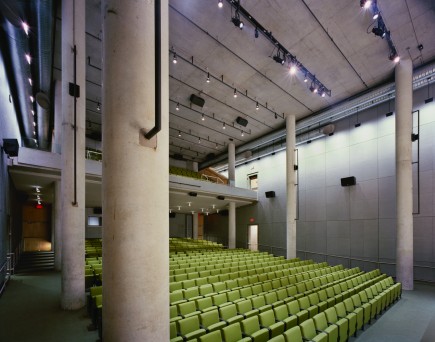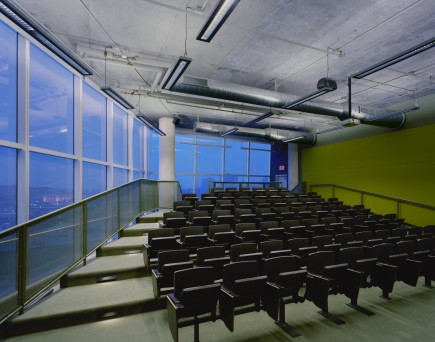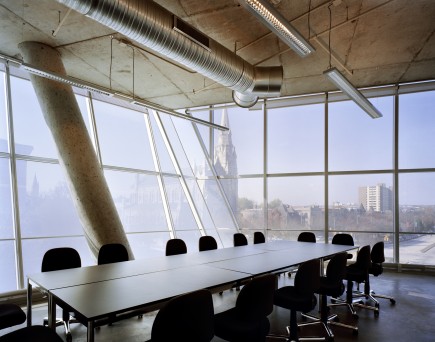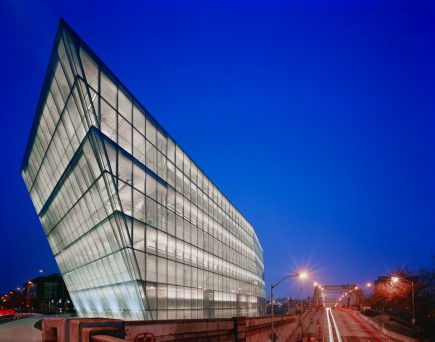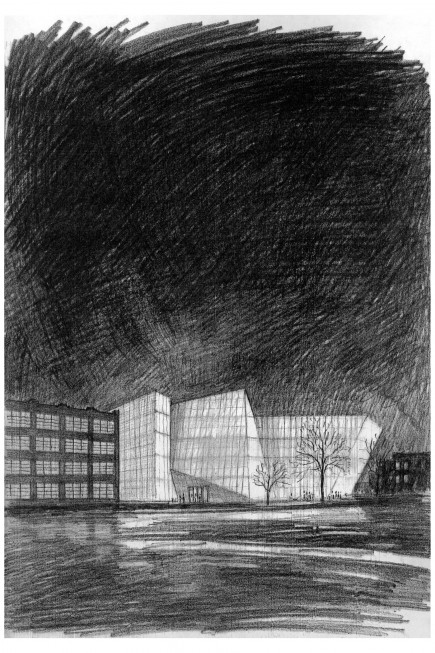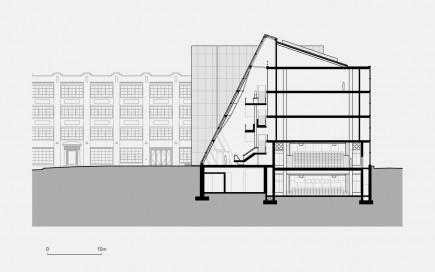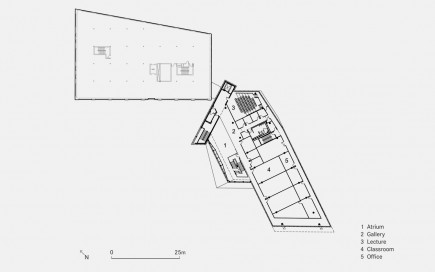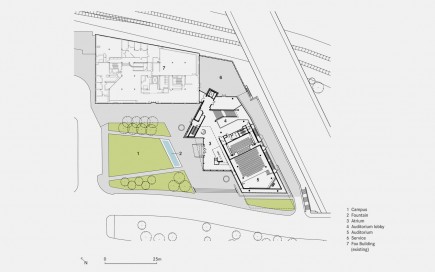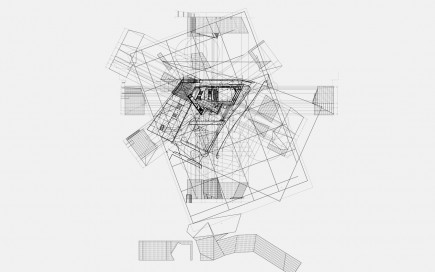1006 Morton Street
Baltimore, MD 21201
410.576.9131 | RW1haWw=
Maryland Institute College of Art Brown Center
Cultural, Educational, Award Winning
View GalleryZiger|Snead & Charles Brickbauer
The boldly sculptural Brown Center, designed by Ziger|Snead and Charles Brickbauer, was the first new building to be constructed on the campus in nearly a century. The center’s crystalline architecture provides an appropriately dynamic image for the college’s growing digital arts department. The angular geometries of the plan were generated by site constraints and translated to the building’s elevations. The faceted exterior is clad in translucent white glass to provide solar shading and create a provocative counterpoint to the white limestone of the college’s Renaissance Revival main building which stands across Mount Royal Ave. The new structure is meant to stimulate a dialogue between contemporary and traditional forms, technologies and materials. While it may appear complex from the outside, the Brown Center is a simple plan with classrooms and other programmatic space wrapped by light-filled hallways which become exhibition and critique space for student work. This four-story concrete structure adjoins a dynamic full-height steel-framed atrium space which functions as the social heart of the facility. This main lobby in turn opens to the newly-created lawn and the historic community beyond. In addition to studio classrooms, the $16 million, 61,000 sf building houses a 535-seat auditorium, galleries, meeting and lecture rooms, a video studio, offices, and support spaces. The Brown Center and its new Plaza have together been carefully conceived to transform a parking lot into a vibrant campus center. The geometry and scale of the new facility, outdoor gathering places, fountain, and pedestrian paths all serve to gather the disparate surrounding structures into a cohesive urban place and a center of campus life.
...simply the finest Modern building erected in Baltimore or Washington since I.M. Pei’s East Building of the National Gallery of Art made headlines in 1978." - Architectural Record
Prior to the Brown Center, the digital arts program had been distributed in found spaces throughout the campus. The consolidated programs within the new facility have created a dynamic learning environment with strong sense of cohesion, pride, and commitment. The architects responded to the challenge of designing for a new generation of visual and performing artists by maximizing opportunities for students to work across discipline boundaries. The auditorium meets the technical requirements for traditional film as well as video and digital art presentations. As a constantly rotating gallery, the corridors provide a fertile ground for students from different departments to exchange ideas and examine each other’s work. A year before construction began, the building’s design garnered the largest single gift in the College’s history, and one of the largest in the country by an African-American donor. The national publicity generated by the gift raised institutional profile in ways still being felt through significantly increased admission applications and the ongoing success of an ambitious capital campaign. The building’s unique design created immediate buzz and garnered local, regional, and national press. The pace of public programming on campus has increased more than 50%, and attendance at College events has risen by more than 30% since the building opened. The design has helped MICA earn a national reputation as a progressive leader in arts education.
